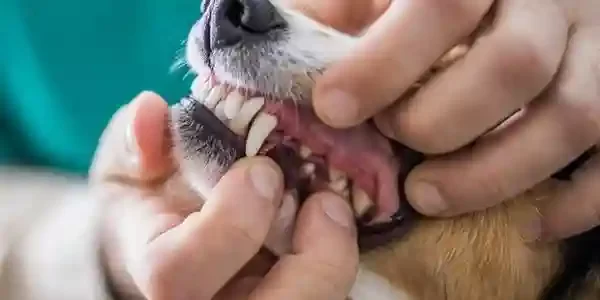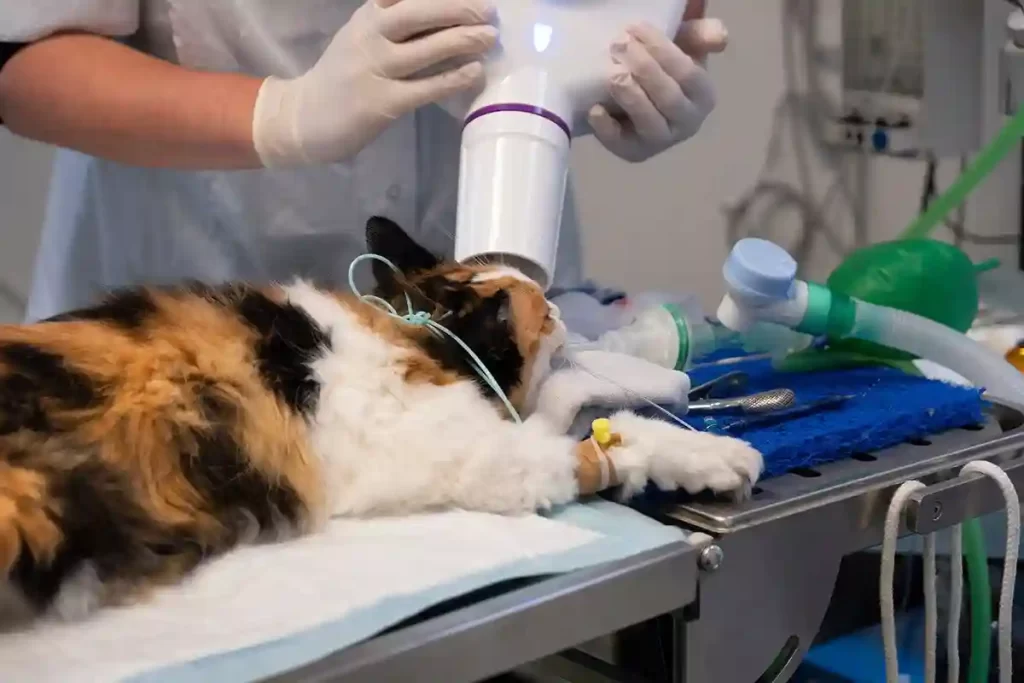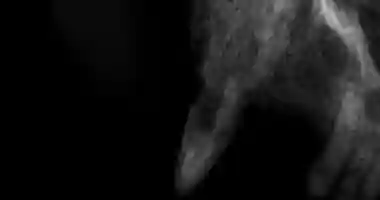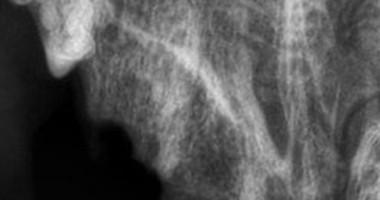Digital Dental Radiography
Veterinary Digital Dental Radiography Brampton – Accurate Diagnosis
Dental disease can be equated to an iceberg: what you see on the surface is a fraction of what lies below. Over 60% of a tooth lies underneath the gumline and ,therefore ,cannot be assessed without the use of dental radiographs (x-rays).
Performing dental cleanings and treatments without the use of dental animal radiography could be equated to driving blind. It is for this reason that it is a standard part of every dental health examination at McQueen Animal Hospital. Veterinary dental specialists would never even consider performing oral health assessments and treatments without the use of dental x-rays, and this is the same standard that we strive to uphold.


Uses for dental x-ray include:
Missing teeth - Detecting unerupted teeth early can prevent severe bone destruction.
Detection of loss of bone around teeth due to gingivitis and dental disease.
Examining broken teeth, which can cause dental abscesses, and to help guide treatment.
Examining dis-coloured teeth, which is often suggestive of tooth abnormalities.

Full mouth examination to carefully assess the health of the teeth and surrounding structures.
Aiming to provide the highest quality of service, we offer veterinary digital dental radiography brampton, the benefits of which are numerous. Because a digital sensor is much more sensitive to x-ray, the amount of radiation required to produce an image can be reduced by 75 – 90%. With our system, there is no need to develop x-ray film. This means that your pet needs to be under anesthesia for significantly less time, as the image x-ray is available for interpretation within seconds, compared to minutes with traditional film. Further, there is no need for toxic developing chemicals, making us much more environmentally friendly.
Digital dental radiology also increases the ability to accurately make diagnoses and to detect abnormalities. With traditional film, inadequate x-ray settings meant many images may have had to be retaken. With digital, images can be adjusted in brightness, contrast, sharpness, size, and much more.
Case Studies
We are likely to obtain valuable information from dental radiographs from every single patient that receives them. Below, you will find just a few examples of how dental radiography allowed us to practice better veterinary dental medicine and provide better care to our patients.
Kitty- 5 Year Old Domestic Shorthair
Kitty had a COHAT – a complete oral health assessment and – here at McQueen Animal Hospital. Under anesthesia, a thorough dental examination revealed an oral resorptive lesion on the upper right canine tooth. Feline oral resportive lesions are a common finding in cats, and present as extremely painful conditions whereby the normal tooth structures resorb, or are destroyed, by the body. In cats with at least one clinically visible lesion, over fifty percent will have multiple lesions, often that start underneath the gumline and that can only be detected with dental x-rays. Below are radiographs from one such case. The image below left is the pre-extraction x-ray. We noted the complete resorption of all the normal tooth root anatomy. With this information, we were able to confidently say that only the crown (or the part of the tooth that we can see) needed to be extracted. Without the veterinary digital x ray, we wouldn’t know that there was no root to extract, and the patient would have endured unnecessary and potentially lengthy extraction procedures trying to remove a structure that isn’t there. The image below right is the post-extraction x-ray, showing complete removal of all remaining tooth structure.


Testimonials
Happy Tails, Happy Customers
EXCELLENTTrustindex verifies that the original source of the review is Google. Best staff ever! They are a very passionate, knowledgeable team who make you and your pets feel right at home. Special shoutout to Kate and Nicole—people don’t believe me when I say my pup’s favourite place to be is the vets to see her friends!Trustindex verifies that the original source of the review is Google. amazing!Trustindex verifies that the original source of the review is Google. I cannot express enough gratitude to the incredible team at McQueen Animal Hospital for the care and compassion they showed my beloved dog, Bella. From the moment we walked through their doors, we were met with warmth, professionalism, and genuine concern for Bella’s wellbeing. Bella had ingested potting mix and orchid bark, which caused a severe blockage in her stomach. She was in terrible pain, unable to eat or pass anything, and the initial diagnosis pointed to a high-risk surgery. However, Dr. Padma, with her remarkable expertise and creativity, worked tirelessly alongside Dr. Roshni to explore non-invasive, medical options. Against all odds, Bella made a miraculous recovery without the need for surgery—a testament to their skill, dedication, and innovative approach to care. Dr. Padma truly went above and beyond, and I will always be thankful for her guidance and compassion. Dr. Roshni, Dr. Babbar, and the rest of the amazing staff, including Kate, Priya, Angel and so many others, were all incredibly supportive throughout this difficult time. Their kindness and generosity gave me so much comfort and hope. Thanks to the team at McQueen Animal Hospital, Bella is now back to her happy, healthy self. I wholeheartedly recommend them to anyone looking for a veterinary hospital that truly cares for their patients and goes the extra mile in every way.Trustindex verifies that the original source of the review is Google. We visited this clinic for first time to get our cat neutered and had a great experience. Dr Mullick, staff, technician, front desk are amazing people. They not only took extreme care of our cat but were very patient explaining the details to us both on the phone and during our visit.Trustindex verifies that the original source of the review is Google. Amazing staff, they truly care about your pet!Trustindex verifies that the original source of the review is Google. Nicole is fantastic. She fit us in for an emergency appointment. Dr. Babber is so attentive and patient to answer all my questions. Great team to work with. Would highly recommend.Trustindex verifies that the original source of the review is Google. Best customer service 💯❤️Trustindex verifies that the original source of the review is Google. We've been going to McQueen animal hospital for about 10 years. The front staff is always nice and helpful. And Dr Babar is a great vet and always gives good advice !Trustindex verifies that the original source of the review is Google. They were very friendly and very caring for my dog. The service was awesome.

